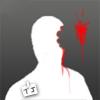While testing my 2D tile engine, I experimented with 3x3, 5x5, 7x7, 9x9, 11x11 tiles sized screen. None of them feels satisfactory.
I googled around for images of tiled based games, and found that they usually use rectangular screens, where the horizontal length is longer than the vertical length. This seems to be more visually pleasing.
I was wondering if you guys have any input about this? Not just regarding the aesthetic but impact on game play. E.g. in PvP players can see further horizontally than they can see vertically.
Rectangle = Best Screen Shape for Tile-based RPG?
16:9 Widescreen is a common, quite modern looking aspect ratio, and is very pleasing to the eye.
The simplest way to do it would be have H: 9 Tiles x W: 16 Tiles.
The impact it would have on your gameplay really depends on the game type and gameplay mechanics. Since 16:9 is almost twice as wide as it is high, it would probably make a significant difference. For example, if your game is an RTS - it is far less risky for the player to venture horizontally (where they can see) than vertically (where they cannot see), games of this ilk would tend to see bases expanding more sideways. That's just an example, as I said, the vairiable is your game type.
If you prefer not to have the game influenced by the visible tiles, why not set the square arrangement in a 16:9 (or whatever ratio you like) frame. It might help the aesthetics without effecting your game, and it gives you a place to house game information/HUD/controls etc...
The simplest way to do it would be have H: 9 Tiles x W: 16 Tiles.
The impact it would have on your gameplay really depends on the game type and gameplay mechanics. Since 16:9 is almost twice as wide as it is high, it would probably make a significant difference. For example, if your game is an RTS - it is far less risky for the player to venture horizontally (where they can see) than vertically (where they cannot see), games of this ilk would tend to see bases expanding more sideways. That's just an example, as I said, the vairiable is your game type.
If you prefer not to have the game influenced by the visible tiles, why not set the square arrangement in a 16:9 (or whatever ratio you like) frame. It might help the aesthetics without effecting your game, and it gives you a place to house game information/HUD/controls etc...
The impact it would have on your gameplay really depends on the game type and gameplay mechanics. Since 16:9 is almost twice as wide as it is high, it would probably make a significant difference. For example, if your game is an RTS - it is far less risky for the player to venture horizontally (where they can see) than vertically (where they cannot see), games of this ilk would tend to see bases expanding more sideways. That's just an example, as I said, the vairiable is your game type.
Thanks for your input. I just remembered that Starcraft 2 uses the same 16:9 screen, and no one seems to mind. Its not going to be a big issue based on the current mechanics of my game. So I guess I should be fine?
Games like SC2 use a camera angle that's not quite overhead, granting a cone of vision that doesn't preserve the aspect ratio. Also, that game keeps the map entirely revealed, but uses a "fog of war" effect to conceal enemy units that aren't within view of your units and structures. This way, visibility isn't bound to what the screen can show, and simple, intuitive camera controls allow vision in all directions to be bound more by game mechanics than by display mechanics. Letting players zoom in and out, move the camera around and otherwise conveniently present themselves with all the map data that their strategic situation entitles them to can help reduce the negative impact of screen size that you describe.
I would generalize the code so that it can use whatever dimensions you plug in. Set the dimensions as constants at one place in the code. Later, when testing/balancing or producing the final assets, you can then easily change them. You may even want to allow non-square tiles.
Generally, it's also recommended that you don't assume what the end user's resolution and aspect ratio will be.
p.s. Of course, you may already have things implemented this way, and are at the testing/balancing point...
Generally, it's also recommended that you don't assume what the end user's resolution and aspect ratio will be.
p.s. Of course, you may already have things implemented this way, and are at the testing/balancing point...
I would generalize the code so that it can use whatever dimensions you plug in. Set the dimensions as constants at one place in the code. Later, when testing/balancing or producing the final assets, you can then easily change them. You may even want to allow non-square tiles.
Yes, good advice. This is indeed how I implemented it. While testing the gameplay, I felt that a "widescreen" format feels better visually.
Games like SC2 use a camera angle that's not quite overhead, granting a cone of vision that doesn't preserve the aspect ratio. Also, that game keeps the map entirely revealed, but uses a "fog of war" effect to conceal enemy units that aren't within view of your units and structures. This way, visibility isn't bound to what the screen can show, and simple, intuitive camera controls allow vision in all directions to be bound more by game mechanics than by display mechanics. Letting players zoom in and out, move the camera around and otherwise conveniently present themselves with all the map data that their strategic situation entitles them to can help reduce the negative impact of screen size that you describe.
Good point. There probably won't be a zoom or option to move the camera around. (its a 2D tile based rpg)
Perhaps I can make a "fog of war" like what SC2 uses. So despite having a 16:9 tile screen and being able to see the entire map, your character can only see entities in a square area (9x9 perhaps?). Thanks for the idea.
This topic is closed to new replies.
Advertisement
Popular Topics
Advertisement








